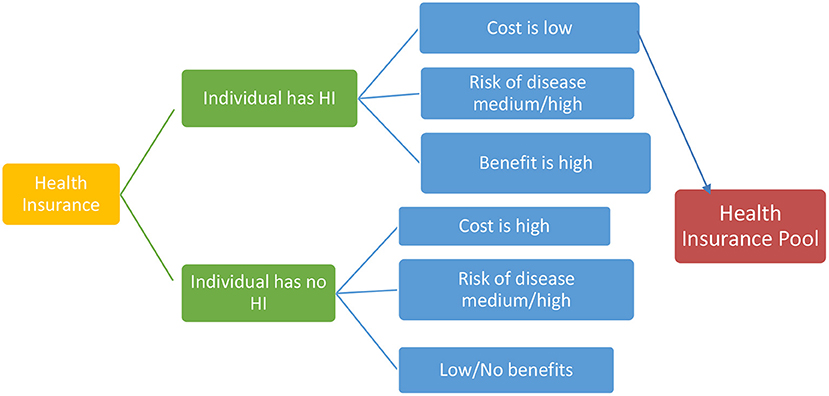More About Medicare Advantage Agent
More About Medicare Advantage Agent
Blog Article
About Medicare Advantage Agent
Table of ContentsThe 8-Minute Rule for Medicare Advantage AgentSome Known Details About Medicare Advantage Agent Top Guidelines Of Medicare Advantage Agent

complies with from perplexing the fairly young age account of the uninsured with the far better health, on standard, of more youthful individuals. This obscures the web link between health and wellness standing and health and wellness insurance coverage. For those without accessibility to workplace wellness insurance, inadequate health is a possible barrier to buying nongroup coverage because such protection might be very priced, leave out preexisting conditions, or be just inaccessible. The variety of uninsured Americans is not especially huge and has actually not changed in recent years. 7 out of ten respondents in an across the country depictive survey assumed that less Americans lacked health and wellness insurance policy than in fact do(Fronstin, 1998). About half(47 percent )believed that the number of people without health and wellness insurance policy lowered or remained constant over the latter fifty percent of the last decade(Blendon et al., 1999). This decrease of almost 2 million in the variety of people 'without insurance coverage (a decrease
of around 4 percent)is definitely a favorable modification. With a softer economy in 2000 the latest reported gains in insurance coverage might not proceed(Fronstin, 2001 ). The decrease in the variety of uninsured will certainly not proceed if the economic climate continues to be slow and health and wellness care costs proceed to exceed inflation. This is because the information were accumulated for a period of strong financial efficiency. Of the estimated 42 million individuals that were without insurance, all yet regarding 420,000(regarding 1 percent)were under 65 years of age, the age at which most Americans end up being eligible for Medicare; 32 million were grownups between ages 18 and 65, about 19 percent of all grownups in this age team; and 10 million were kids under 18 years of age, about 13.9 percent of all youngsters (Mills, 2000). These quotes of the number of individuals without insurance are produced from the annual March Supplement to the Existing Population Survey (CPS), carried out by the Census Bureau. Unless or else kept in mind, national price quotes of people without health and wellness insurance and proportions of the populace with different sort of protection are based on the CPS, one of the most widely used resource of estimates of insurance policy protection and uninsurance prices. These studies and the price quotes they generate are defined briefly in Table B. 1 in Appendix B - Medicare Advantage Agent. These surveys vary in size and sampling methods, the questions that are asked concerning insurance policy
The Basic Principles Of Medicare Advantage Agent
coverage, and the time period over which insurance policy protection or uninsurance is measured(Lewis et al., 1998, Fronstin, 2000a ). Still, the CPS is particularly beneficial because it produces annual quotes relatively swiftly, reporting the previous year's insurance policy protection approximates each September, and due to the fact that it is the basis for a consistent set of estimates for even more than twenty years, permitting analysis of trends in protection gradually.

The 9-Minute Rule for Medicare Advantage Agent
Over a three-year period beginning early in 1993, 72 million individuals, 29 percent of the U.S. population, lacked coverage for a minimum of one month. Within a single year(1994), 53 million individuals experienced at the very least a month without insurance coverage(Bennefield, 1998a). Six out of every 10 uninsured grownups are themselves used. Although working does enhance the probability that and one's relative will certainly have insurance coverage, it is not an assurance. Even participants of households with two full-time wage income earners have virtually a one-in-ten chance of being uninsured (9.1 percent uninsured rate)(Hoffman and Pohl, 2000 ). The connection in between medical insurance and access to care is well developed, as recorded later in this phase. Although the connection in between wellness insurance policy and wellness results is neither direct neither simple, a considerable clinical and health and wellness solutions research study literature links health and wellness insurance protection
to enhanced access to care, better top quality, and enhanced personal and populace wellness status. The second report, on individual health and wellness outcomes for uninsured grownups, is stood for by the inner circle of the number, while the third report, on household health, includes the subjects of the second record but emphasizes a different unit of analysis, namely, the family. The 6th record in the collection will present info about strategies and efforts embarked on in your area, statewide, or nationally to resolve the absence of insurance coverage and its negative impacts. Levels of analysis for analyzing the results of uninsurance. This conversation of medical insurance coverage focuses largely on the U.S. population under age 65 since essentially all Americans 65 and older have Medicare or other public protection.
Moreover, it concentrates particularly on those with no health insurance coverage for any type of length of time. The problems dealt with by the underinsured are in some aspects comparable to those encountered by the uninsured, although they are typically much less serious. Uninsurance and underinsurance, however, involve clearly various plan concerns, and the approaches for addressing them may vary. Throughout this research study and the five records to adhere to, the major emphasis is on individuals without health and wellness insurance coverage and therefore no support in spending for wellness treatment beyond what is readily available through charity and safeguard institutions. Wellness insurance is an effective element influencing invoice of treatment because both clients and medical professionals reply to the out-of-pocket cost of services. Medical insurance, however, is neither essential neither enough to get accessibility to clinical services. The independent and straight effect of health
insurance insurance policy protection access accessibility health health and wellness solutions well establishedDeveloped Others will get the wellness care they need even without medical insurance, by spending for it out his comment is here of pocket or seeking it from companies who supply treatment free or at very subsidized prices. For still others, wellness insurance alone does not ensure invoice of care as a result of various other nonfinancial obstacles, such as an absence of healthcare service providers in their area, restricted access to transportation, illiteracy, or etymological and social distinctions. Official research about uninsured populations in the United States dates to the late 1920s and very early 1930s when the Board on the Price of Healthcare created a collection of reports about financing physician workplace gos to and hospitalizations. This issue came to be significant as the varieties of medically indigent climbed throughout the Great Clinical depression. Empirical research studies regularly support the web link between access to care and enhanced wellness results(Bindman et al., 1995; Starfield, 1995 ). Having a routine resource of treatment can be taken into consideration a forecaster of access, as opposed to a direct action of it, when wellness outcomes are themselves used as access indications. This extension of the notion of access dimension was made by the IOM Board on Keeping An Eye On Accessibility to Personal Health Treatment Provider(Millman, 1993, p. Whether or not parents are insured shows up to affect whether their kids obtain treatment along with just how much careeven if the children themselves have protection(Hanson, 1998). The health of moms and dads can affect their capability to look after their kids and the level of family members stress. Fretting about their children's access to care is itself a resource of anxiety for moms and dads. Three chapters adhere to in this record. Chapter 2 offers an introduction of just how employment-based medical insurance, public programs and private insurance coverage operate and interact to provide extensive however incomplete insurance coverage of the united state populace. This includes a review of historical trends and public laws affecting both public and personal insurance policy, a discussion of the communications among the various types of insurance, and an evaluation of why people move from one program to one more or end up
:max_bytes(150000):strip_icc()/types-of-employee-benefits-and-perks-2060433-Final-edit-60cedb43c4014fdeb51aa3cd3c25f027.jpg)
Report this page